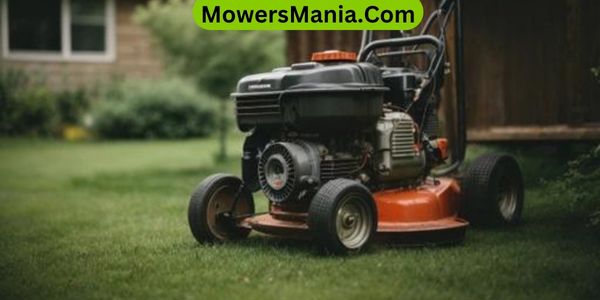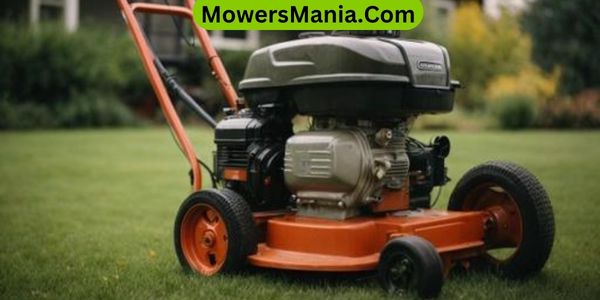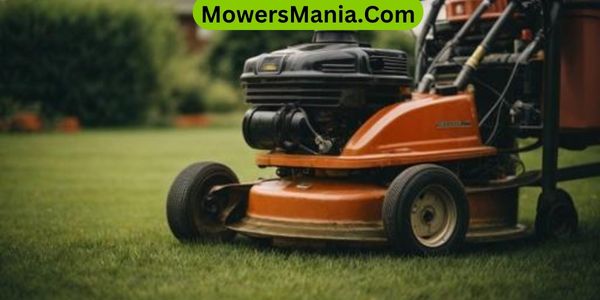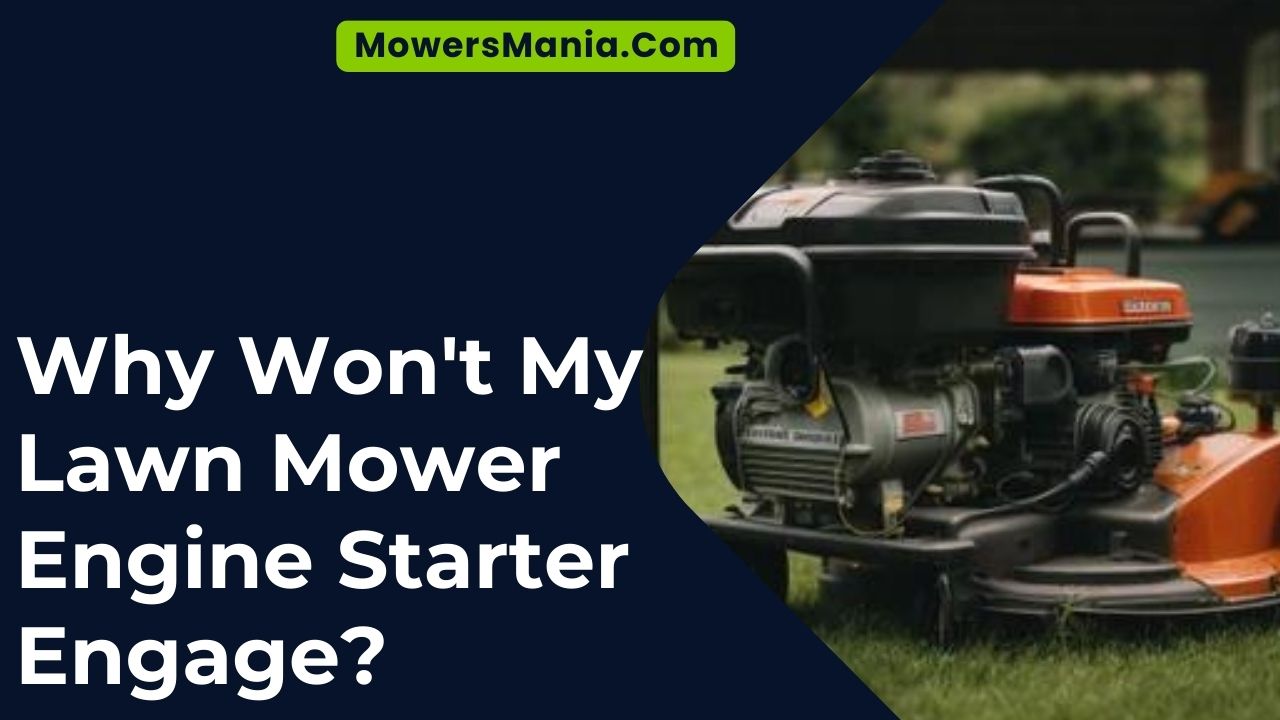If your lawn mower engine won’t start, it can be frustrating. But don’t worry, there are several common reasons why the starter won’t engage.
From a faulty starter motor to dirty connections, it’s important to check these potential issues to get your mower up and running again.

Let’s explore the possible causes and solutions to get your lawn mower engine starter engaging smoothly.
Faulty Starter Motor
Is your lawn mower engine’s starter motor showing signs of wear or damage? If you’re experiencing difficulty starting your mower, a faulty starter motor could be the culprit.
When the starter motor is worn out or damaged, you may notice a clicking sound when you try to start the engine, or the engine may not turn over at all. This can be frustrating, especially when you’re eager to get your yard work done.
To diagnose the issue, start by checking the connections to the starter motor. Loose or corroded connections can impede the flow of electricity and prevent the starter motor from engaging properly.
If the connections appear to be in good condition, the issue may lie within the starter motor itself. Over time, the internal components of the starter motor can wear out, leading to decreased performance.
If you suspect that the starter motor is faulty, it’s essential to address the issue promptly to avoid further damage to the engine.
Consult your mower’s manual for guidance on inspecting and replacing the starter motor, or seek assistance from a professional if you’re unsure how to proceed.
Low Battery Voltage

If you’re experiencing difficulty starting your mower due to a faulty starter motor, low battery voltage can exacerbate the issue, leading to intermittent or ineffective engine engagement.
When the battery voltage is low, the starter motor may not receive enough power to turn the engine over consistently. This can result in the engine struggling to start or failing to engage altogether.
Low battery voltage can also cause the starter motor to produce a slow cranking speed, making it difficult to ignite the engine.
To address low battery voltage, start by checking the battery terminals for corrosion or loose connections. Clean the terminals if necessary and ensure they’re securely tightened. If the connections are fine, use a multimeter to measure the battery voltage.
A fully charged battery should read around 12.6 volts. If the voltage is significantly lower, it may be time to recharge or replace the battery.
Additionally, inspect the battery cables for any signs of damage or wear that could contribute to voltage issues.
Dirty or Corroded Connections
Addressing dirty or corroded connections on your lawn mower can significantly impact the effectiveness of the starter motor and improve engine engagement.
When connections are dirty or corroded, it creates resistance and impedes the flow of electricity from the battery to the starter motor. This resistance can prevent the starter motor from receiving the full voltage it needs to engage and turn over the engine.
To address this issue, start by disconnecting the battery and removing the cables from the terminals. Inspect the terminals and cable ends for any signs of corrosion or dirt buildup. Use a wire brush or sandpaper to clean the terminals and cable ends thoroughly.
Additionally, check the wiring harness and connectors for any signs of corrosion or dirt, and clean them as needed. Once all connections are clean, reattach the cables to the battery terminals and ensure they’re tightened securely.
This simple maintenance task can greatly improve the electrical flow to the starter motor and help resolve issues with engine engagement.
Damaged Starter Solenoid

To troubleshoot a damaged starter solenoid on your lawn mower engine, start by checking for visible signs of wear or corrosion on the solenoid housing and connections.
The starter solenoid is responsible for transmitting electrical current from the battery to the starter motor when you turn the ignition key. Over time, the solenoid can wear out or become damaged, leading to issues with engaging the starter.
Look for any physical damage, such as cracks or dents, on the solenoid housing. Additionally, inspect the connections for rust, corrosion, or loose wires. If you notice any of these issues, it may be time to replace the starter solenoid.
Keep in mind that a damaged solenoid can prevent the starter motor from receiving the necessary electrical current, causing it to fail to engage.
Engage Control Cable Issues
Check the control cable for any signs of fraying or damage that may be preventing the starter from engaging. The control cable is essential for transmitting the engagement signal from the starter control handle to the starter mechanism.
Here are a couple of things to consider:
- Inspect the Control Cable: Look for any visible signs of damage such as fraying, kinking, or stretching along the length of the control cable. If you notice any of these issues, it could be preventing the control cable from properly transmitting the engagement signal to the starter.
- Key Areas to Check: Focus on areas where the control cable bends or makes contact with other components. These are common areas where damage or wear may occur, leading to issues with the starter engagement.
- Replace or Repair as Needed: If you identify any damage to the control cable, it’s important to either repair or replace the cable to ensure proper engagement of the starter mechanism. Ignoring damaged control cables can lead to further issues with the lawn mower’s starting system.
Engine Mechanical Problems

If your lawn mower engine starter frequently fails to engage, you may need to inspect the engine for mechanical problems. Engine mechanical issues can prevent the starter from engaging, causing frustration and inconvenience.
Here are some common engine mechanical problems that could be causing your lawn mower starter to malfunction:
| Problem | Description |
|---|---|
| Low Compression | If the engine has low compression, it may not generate enough power to turn the starter motor. |
| Faulty Flywheel Key | A sheared or damaged flywheel key can cause misalignment, preventing the starter from engaging. |
| Engine Seized | A seized engine due to lack of lubrication or overheating can make it impossible for the starter to turn the engine. |
| Worn Starter Components | Worn out starter components such as the gears or solenoid can prevent the starter from engaging properly. |
Inspecting these engine mechanical problems can help you identify the root cause of the starter engagement issue and take appropriate action to resolve it.
Frequently Asked Questions [FAQs]
Can a Lawn Mower Engine Starter Still Fail Even if the Starter Motor Is Not Faulty?
Yes, a lawn mower engine starter can still fail even if the starter motor isn’t faulty. Issues like a bad solenoid, corroded connections, or a weak battery can prevent the starter from engaging properly.
How Can Low Battery Voltage Affect the Engagement of the Lawn Mower Engine Starter?
Low battery voltage can prevent the starter from engaging in your lawn mower engine. When the voltage is low, the starter motor may not receive enough power to turn the engine over, causing the starter to fail.
Are There Any Signs or Symptoms of Dirty or Corroded Connections That Can Help Identify This Issue?
If you notice difficulty starting your mower, check for signs of dirty or corroded connections. These include visible dirt or rust, or difficulty inserting and removing the battery cables. Cleaning or replacing these connections may solve the issue.
What Are the Potential Consequences of a Damaged Starter Solenoid in a Lawn Mower Engine?
If the starter solenoid in your lawn mower engine is damaged, it can lead to issues like difficulty starting the engine or complete failure to start. It’s crucial to address this problem promptly to avoid further damage.
What Are Some Common Signs of Engine Mechanical Problems That Could Impact the Engagement of the Starter?
If your lawn mower engine has mechanical issues, the starter may not engage. Signs include strange noises, excessive vibration, or difficulty starting. Have a professional inspect your engine to diagnose and fix the problem.
Conclusion
So, if your lawn mower engine starter won’t engage, it’s likely due to a faulty starter motor, low battery voltage, dirty connections, damaged starter solenoid, issues with the engage control cable, or engine mechanical problems.
To fix the issue, you’ll need to troubleshoot each potential cause and make the necessary repairs or replacements. Once you address the underlying issue, your lawn mower should start up smoothly again.



